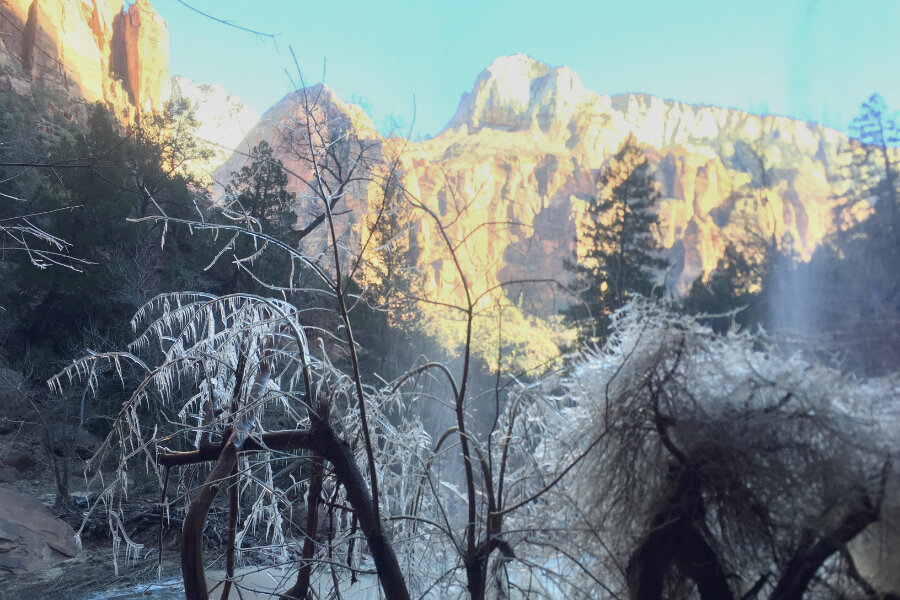National park in Utah 'loved to death,' even in winter
| SALT LAKE CITY
Officials at southern Utah's Zion National Park say they're being overrun by visitors, even during the usual winter lull.
Rangers have had to block tour buses and oversize vehicles from Zion Canyon to control the crowds during the holiday season and close the road, The Salt Lake Tribune reported (http://bit.ly/2hHBV10 ). Cars are sometimes rushed through the toll gate without the usual $30-per-vehicle charge as traffic backs up into neighboring Springdale.
Visitation is expected to top 4 million for 2016, a record. The number of visitors headed to see snow-covered red rock during the park's offseason has jumped by the biggest margin, ticking up nearly 70 percent since 2010. Other national parks reported record attendance in 2016. Nearly 3 million people visited Glacier National Park in Montana last year, a record, officials said.
Winter used to be a quiet time at Zion National Park, which is 160 miles from Las Vegas and about 300 miles from Salt Lake City. But that's rapidly changing, park ranger John Marciano said.
"It used to be a time to breathe, regroup and rehire," he said. "Many of the park rangers have different positions. We are stretched so thin we have to rotate positions."
Some Springdale residents, meanwhile, are calling on the state to tone down its "Mighty Five" tourism campaign focused on the state's national parks.
"We are ruining our park with too many people. It has not been fun," town councilwoman and park volunteer Lisa Zumpft said. "I would like to see our town protected because it is losing its character."
The winter crowds don't necessarily translate into more traffic at town businesses, gallery owner Tina Fairlamb said. "I see a lot of cars coming and going, but I don't see a lot stopping," she said.
The park has a mandatory shuttle system in the summer, but the service is curtailed in the winter, meaning more visitors use cars.
The number of emergency calls has also nearly doubled in the last four years to 686 in 2015, according to park officials.
Zion National Park leaders are working on a new master plan for managing the ever-growing crowds that have waits for the shuttle topping two hours at times. Park officials could institute a timed-entry or reservation system, or develop trails that encourage non-motorized transport. The final plan is expected in fall 2018.






